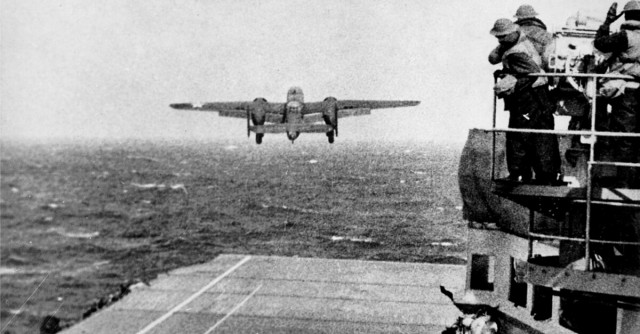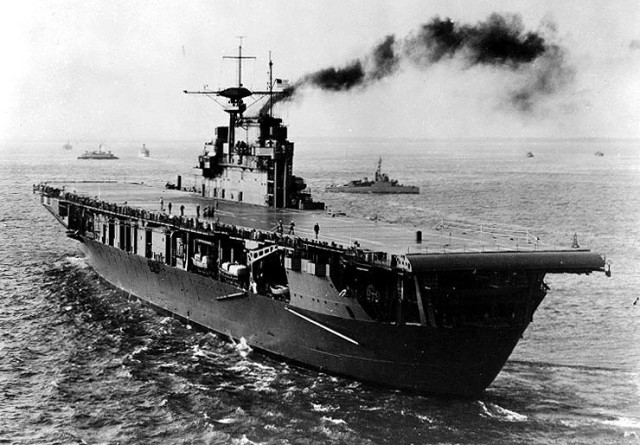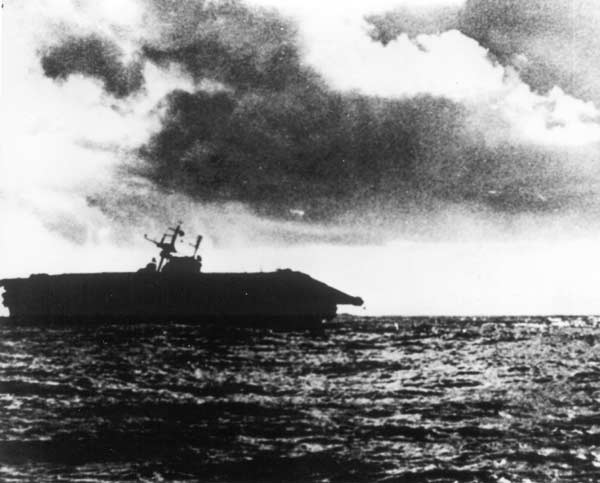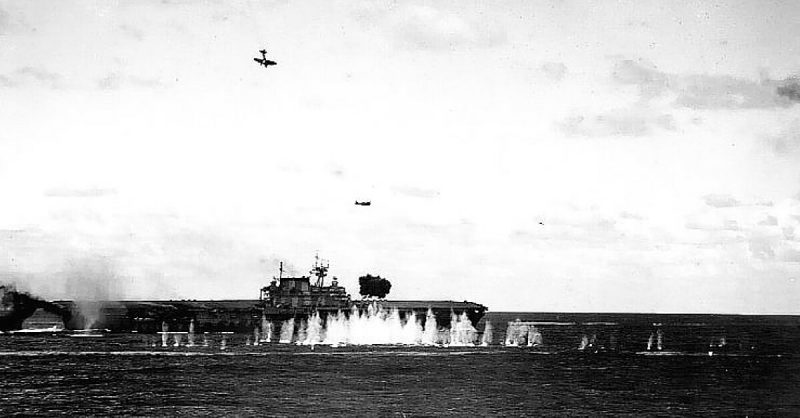A Yorktown-class aircraft carrier, the USS Hornet was a U.S. Navy ship used in the Pacific Theater during World War II. She was known for launching the Doolittle Raid on Tokyo. She also was an active participant in the Battle of Midway.
On October 26, 1942, the Battle of the Santa Cruz Islands occurred without the surface ships of opposing forces having contact. The USS Enterprise’s planes had bombed Zuiho, a carrier, that morning.
Planes from the Hornet caused severe damage to the Shokaku, also a carrier, and Chikuma, a heavy cruiser. The Hornet’s warplanes also attacked two other cruisers.

A coordinated Japanese torpedo-plane and dive bomber attack was made on the Hornet. Within a 15-minute timeframe, three Aichi D3A Val dive bombers hit the Hornet with bombs. One of the Vals suffered serious damage by anti-aircraft fire as it made its approach toward the Hornet, it then crashed into the Hornet’s island, spreading burning gas across the deck and killing seven men.
Nakajima B5N torpedo planes, which were called “Kates” attacked the carrier scoring two hits that caused major damage to the engines and electrical systems. As the carrier stopped, another Val that had been damaged crashed intentionally into the port side of the ship near her bow.
Power was knocked out to her engines so that the Hornet couldn’t land or launch aircraft. The pilots had to either make landings on the Enterprise or crash into the ocean.

The Northampton was ordered by Rear Admiral George D. Murray to tow Hornet away from the action. Because the Enterprise was the focus of Japanese planes at that point, Northampton towed the Hornet at about five knots.
Repair crews were about to restore the power just before a round of nine more Kate torpedo planes attacked. Out of those planes, eight were either shot down or didn’t make their hit.
The one plane remaining planted a torpedo into the starboard side of the Hornet, resulting in a fatal blow. It destroyed the repairs to the electrical system and resulted in a 14-degree list.
Refusing to Die

After being made aware that surface forces of the Japanese military were approaching and that further effort to tow the Hornet were futile, Vice Admiral William Halsey ordered that the ship be sunk with an order or “abandon ship.”
The last man on board was Capt. Charles P. Mason who climbed over the side. Escorting destroyers picked up the survivors. American warships tried to scuttle the carrier, which had taken in 9 torpedoes with many of them did not explode.
Hornet had also been hit by more than 400 5-inch rounds from Anderson and Mustin, two destroyers. The destroyers left when a surface force from Japan entered the area.
The Hornet was finished off by four 24-inch torpedoes fired by the Akigumo and Makigumo, which were two destroyers.
The Hornet went down at 1:35 a.m. on October 27, after losing 140 sailors.
